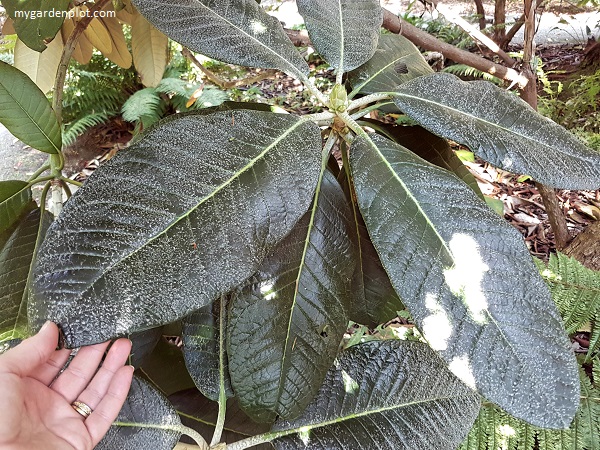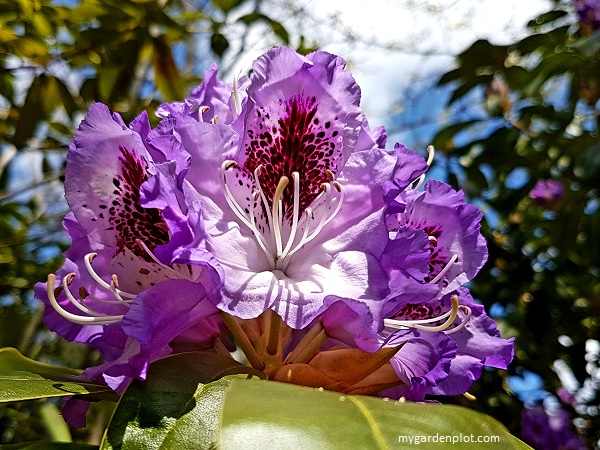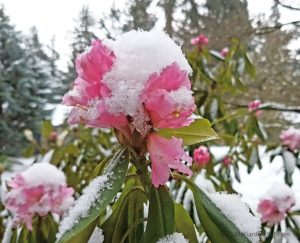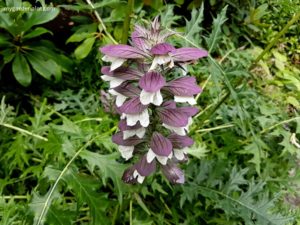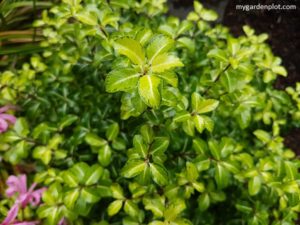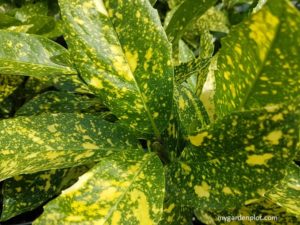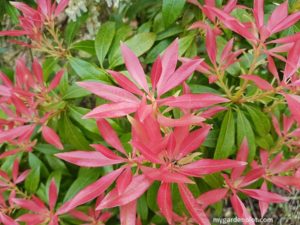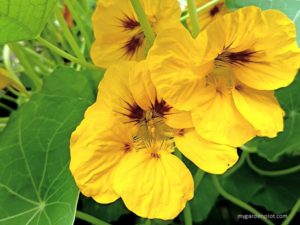A Defining Flowering Shrub On The West Coast: Rhododendrons
It is impossible to miss seeing at least one rhododendron or azalea in a garden in southern British Columbia. I would even venture to extend that thought for most garden communities in the Pacific Northwest. Some species are native to this region, while others come from Asia and Europe. These ornamental flowering shrubs are by far one of the most popular flowering shrubs in this region. They are easy to grow with our acidic soils and cool, rainy conditions. Whether you are in England, Japan or on our west coast, rhododendron-lovers eagerly anticipate their colourful arrival in spring. If planned well, a garden can dazzle with rhododendron and azalea blossoms all season long by planting plants that bloom from late winter to late spring. There are literally 100s of choices. Following are tips and essential information where to plant how to grow, care, deadhead and how to prune rhododendrons or azaleas.
Aside from their stunning spring performance, they are known for their durability and some varieties for their cold hardiness. They are relatively low maintenance evergreens, perfect for spring gardens and back drop with summer gardens. One of the fantastic things about this plant is the wide choice of species, sizes and an incredible choice of colours. Selection should take into account the size of your garden too. While there are stunning small rhododendrons suitable for container gardening, there are some species that are giants and can dwarf a house. However, the typically large species readily available at the garden shop reaches up to about three metres (10 feet) with an equally wide spread. Always check the nursery information provided for the specific rhododendron you select to purchase.
The Difference Between Rhododendron And Azalea
So how can you tell the difference between rhododendrons or azaleas? Rhododendrons are generally evergreen with glossy dark leaves. And azaleas are mostly deciduous with a softer leave structure. But, there are some deciduous rhododendrons and a few evergreen azaleas. To distinguish between the two, it is much easier to look at the flower. You will notice that the rhododendron flower has 10 or more stamens, while the azalea has five or six stamens. Also, rhododendron flowers appear in a large cluster called trusses, and the azalea generally only have one to three flowers at the end of a new stem.
The reason behind the different names goes back to the 18th century when the azalea was listed under its own genus, Azalea. At that time, it was considered to be different from the rhododendron. Today, azaleas are identified as members of the genus Rhododendron. While the name ‘azalea’ is technically no longer recognized as a botanical name, it is still commonly referred to as such for practical reasons.
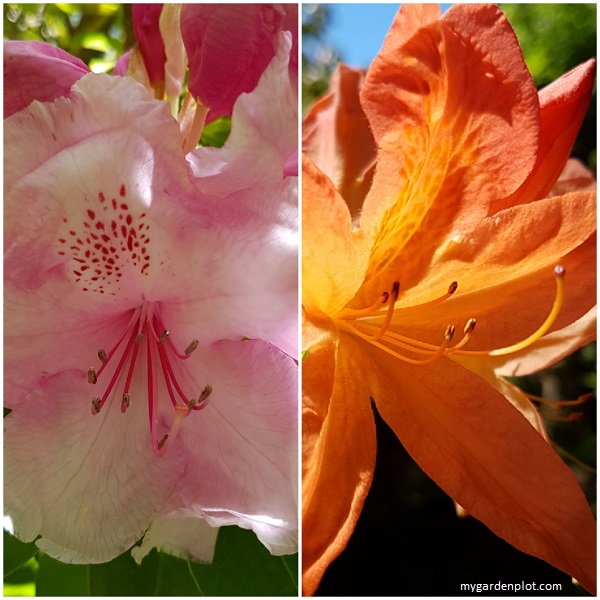
Rhododendrons And Azaleas At A Glance
Type: Evergreen and deciduous
Location: Part shade to full sun
Blooming Season: Early, mid and late spring
Height: Varies 0.5 – 3+ metres (2 – 10+ ft)
When To Prune: Most varieties mid-summer after flowering (see pruning tips below)
Cold Hardiness Zones: 3, 4, 5, 6, 7, 8, 9
Where To Plant And How To Care For Rhododendrons And Azaleas
Rhododendrons require moist, acidic soil that drains well. Don’t plant too deep as this may damage or kill the plant. Shallow plant covering the rootball with no more than 2-3 cm (about 1 inch) of mulch mixed into the soil. Planting can be done anytime but best either in spring or autumn. If planting in spring, ensure it is consistently watered throughout the hot summer months, especially the first year.
The general rule of thumb for rhododendrons is the larger the leaf, the more shade from the sun it needs. But never in complete shaded areas. Good locations are sunny mornings or late afternoon sun, with shade from the hot midday sun. Keeping those roots cool. Azaleas, for the most part, can tolerate more sun, colder temperatures and drier conditions. All rhododendrons and azaleas benefit from a light fertilizer (specifically for acid-loving plants) mixed in with mulch every spring.
Some of the smaller Azaleas can be planted in a container, and look lovely on a patio.
Rhododendrons and azaleas are easy to look after and low maintenance. They are generally trouble-free and are deer resistant. Though root weevils, root rot, mildew and chlorosis can affect stressed rhododendrons.
RELATED TOPIC: How To Manage Common Pests And Diseases In The Garden
How And When To Deadhead Rhododendrons And Azaleas
After flowering, deadheading is often recommended for evergreen large-flowered rhododendrons. Some say it can be left as is as it is purely an aesthetics thing. However, most do recommend removal to encourage growth and visual appeal and prevent evergreen rhododendrons from getting lanky. If your rhododendrons are too tall, then its not worth trying to deadhead the top faded flowers- it won’t hurt the plant. Evergreen azaleas don’t need deadheading.
To deadhead, be careful when removing the faded flowers. It should snap off easily. If it bends, it is not ready for deadheading and may just need a few more days before you can snap off the faded flower. Take care not to damage the new growth bud forming just below the fade flowers.
RELATED TOPIC: Buyer’s Guide On How To Choose Hand Pruners (Secateurs)
When And How To Prune Rhododendrons And Azaleas
Rhododendrons don’t need regular pruning unless it is to reduce the size, reshape or remove deadwood. Although a little pruning every two or three years helps keep any leggy stems in check. This will aid in developing a bushy growth habit with younger plants and encourage more flower production. If pruning is required, it should be done immediately after flowers have faded. If pruning is left to be done later in summer, you will likely lose next year’s flowers.
Deciduous azaleas are easy to maintain by trimming to the height you wish after the flowers have faded. Mature deciduous azaleas may need a few old stems to be removed to encourage new stem growth.
Tools Needed For Pruning Rhododendrons
Below is the list of essential tools needed to prune rhododendrons. Remember that pruning will encourage a bushy growth habit and better flower production. The following links help narrow down the top-recommended products for your pruning tool kit:
- Pruners – Bypass pruners are the most popular choice for gardeners and a must in a pruner’s tool kit. Bypass means the blades pass each other in a scissorlike action providing a clean cut without splintering the stem’s edge. The anvil-type pruner, where the upper blade cuts against a lower flat edge, must always be kept sharp. Otherwise, it will crush the stem while trying to cut it. The best anvil-type pruners tend to be more expensive but worth it as they stay sharper for longer periods reducing the need to sharpen more frequently. Pole pruners are also very handy to have especially when pruning very tall shrubs and trees without a ladder.
- Long-handled Loppers – These are similar to pruners but with long handles. Loppers are heavy-duty and great for harder to reach stems that may also be too thick for pruners. Shop for an extendable lopper for the extra reach.
- Pruning Saw – Saws are useful for thick stems that are growing close together. A Grecian saw or Japanese-blade pruning saw is a handsaw with a curved edge that works with a pull-stroke action. Great for those stems that pruners and loppers can’t cut. It will need a protective case. We also recommend a folding hand saw with a pull-stroke action for smaller gardens. It looks similar to a large pocket knife and works in the same manner as a Grecian saw.
- Garden Gloves – Gardening gloves help keep hands clean and provide protection. Fabric gloves with vinyl offer a good grip on the fingers and palm. Good for warmer weather. For more challenging jobs, a pair of suede or leather gloves go a long way. Not too comfortable in warmer weather, though.
RELATED TOPIC: Buyer’s Guide On How To Choose A Pruning Saw
Interesting Tidbit
One of the oldest rhododendron shrubs is here on Vancouver Island. It is over 125 years old. And size-wise, some gigantic rhododendrons can reach a remarkable height of 30 metres (100 ft) tall, and the leaves can be as long as a person’s arm. Impressive, right?
